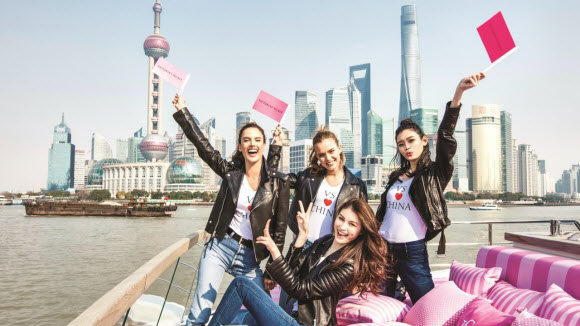The 2017 Victoria’s Secret Fashion Show, airing on November 28, is full of firsts: a high-profile collaboration with Balmain, a whopping 16 newbies, a more diverse lineup, including seven (well, actually eight, but more on that in a bit) Chinese models — up from last year’s record number of four — and, in probably not much of a coincidence, a far-flung Shanghai location, where the brand just opened a four-story, 25,850-square-foot flagship in February.
Victoria’s Secret surely has its eye on the prize: China’s women’s underwear market is rife with opportunity and is expected to grow to nearly $26 billion in 2021 — up nearly 22 percent from $21 billion in 2016, according to market research firm Euromonitor International. It’s a great time for VS to take advantage of a very “fragmented” market that consists of both local Chinese brands (like Cosmo Lady China Holdings and Beijing Aimer Lingerie) and European luxury labels like Etam, La Perla and Agent Provocateur, but has no clear favorite. The brand is already massively growing its retail footprint in Asia: A 12,294-square-foot Chengdu location opened in March, with Beijing coming soon with a goal of hopefully generating $150 million in annual sales from all three outposts.
For these reasons, holding the annual, well-publicized fashion show in the glamorous, dynamic and international financial center of Shanghai seems like a strategic no-brainer. But while the global brand’s established marketing strategy might work famously in the West, China presents a whole new challenge with different variables, from how to avoid cultural appropriation to the all-important question of how it will affect sales. In May, VS parent company L Brands reported a seven percent net loss and a 38 percent net revenue drop from the year prior and according to the August sales report, a 1 percent drop in total sales and a 4 percent decline in same-store sales. So capturing the China market is quite crucial at the moment. (At press time, reps for Victoria’s Secret were not available to comment for this story.)
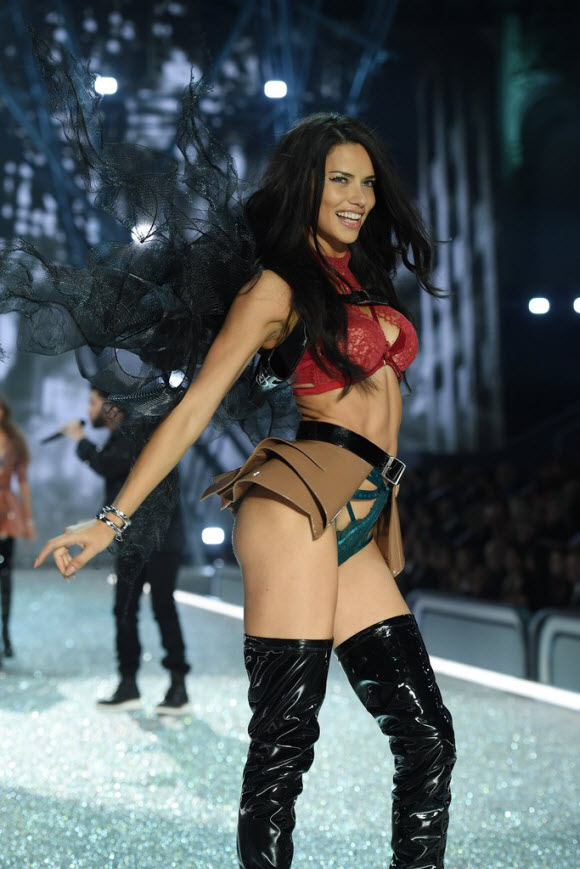
But first, let’s quickly revisit last year’s show in Paris featuring Elsa Hosk wrapped in an imperial dragon, Kendall Jenner framed by garish Phoenix wings and Adriana Lima in Chinoiserie-embroidered thigh-high boots with dragonflies peeking out from her wings like little cocktail umbrellas. The clumsy cultural references elicited an immediate backlash from Chinese consumers, via popular regional social media platforms Weibo and WeChat, who either thought the cluelessness of the brand was essentially lame or expressed offense at the sullying of traditional symbols. “Chinese style is reserved; linking it with bikini outfits just makes it slutty,” ranted one commenter.
However, uptight attitudes toward sexed-up lingerie are changing quickly in Chinese society. “It is much more open compared to a couple of decades ago,” says Theresa Yang, Business Analyst at Bomoda, a consumer intelligence agency with a focus on China’s luxury market. She points to increasingly fashion-savvy Chinese consumers — especially the younger set of shoppers in their 20s and 30s — with progressive attitudes and a penchant for embracing trends, like off-the-shoulder tops and slip dresses, which require more versatile foundation garments. Plus, “for couples’ intimacy, Chinese consumers are looking for sexy, but also elegant elements in product design,” she adds.
Yiling Pan, Associate Editor of Jing Daily, cautions that VS’s signature “sexy” brand culture — especially that of the annual runway extravaganza — could hurt its chances with the mass Chinese market that’s still focused on practicality and functionality. “If they really want to find a proper way [to reach the Chinese audience], they probably need to get this ‘sexy’ element out of their product,” she says, referring to the way Chinese-branded lingerie commercials resonate with the target audience.
“Mostly they will just try to tell consumers how comfortable their products are, but not how sexy you would look if you put on my product,” she adds. Pan might have a point, considering that Jing Daily found that the wireless bralette is VS’s top-selling item via its official e-commerce shop on Alibaba’s Tmall, generating comments like “never worn such a comfortable bra before.”
On one hand, the Chinese consumer is already very familiar with the brand itself through the 26 Victoria’s Secret beauty, fragrance and accessories stores that opened a year prior to the Shanghai flagship. However, the prevalence of unsanctioned “daigo” — or resellers that sell items at outrageously inflated prices — counterfeiters and an actual knock-off of the Victoria’s Secret Runway Show have created brand confusion that needs some serious clearing up.
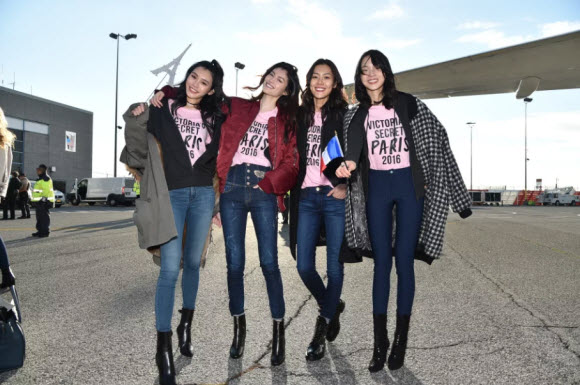
The choice of Shanghai for the real thing comes at an extremely timely moment for on-site branding, and brings the opportunity to cast a record number of Chinese models, four of which are veterans — Liu Wen (the first ever East Asian model to walk the show), Sui He, Ju Xiaowen and Ming Xi — plus newbies Xin Xie and French-Chinese Estelle Chen.
“When Victoria’s Secret increased the [Chinese] model number, Chinese consumers know the brand is very serious in looking to the Chinese market — and they know the brand values of the Chinese consumers,” says Yang. “It’s a good way to expand the brand presence in China.” Plus, as we know, it’s nice to see a person who looks like you on the runway. “Many [social media] users were talking about, ‘Oh, thank god, more Chinese faces,” Pan says. “‘There are even new Chinese faces!'”
In addition, there will be an eighth addition cast in a very American sort of way, via a reality model competition show, translated as “Angel Road” or “Road to Runway.” (Here’s the first episode, including a blooper reel of Ming Xi filming the intro at the 2:01 mark.)
Eight Chinese models walking the globally viewed Victoria’s Secret Fashion Show in Shanghai is a notable societal and cultural benchmark in China that goes beyond simple diversification of the famous runway cast. Back in the day, modeling wasn’t necessarily perceived as a desirable (or respectable) career path in China. Not to mention, ad campaigns in China tended to feature “Western” (read: white) faces because they were perceived as more sophisticated and international — desired attributes to associate with a luxury product. Hence, Chinese models were scarce and, if cast, thought of as more “low-end,” explains Michelle Chen, Shanghai-based public relations and marketing director of Esee Model. When the agency was founded in 2002, clients tended to prefer non-Chinese models. But then a major shift in attitude happened around 2006, when Fei Fei Sun (who’s signed to Women Management) and Kang Qian Wen (who goes by “Kiki”) became recognized and lauded at international fashion weeks.
“People in China started to recognize that Chinese models can be supermodels as well,” Chen explains. Modeling started to become a viable career associated with the attractive qualities and perks of being cultured, well-traveled and refined. Training schools started popping up around the country, with some universities even offering the subject as part of the coursework. Currently, Esee represents about 250 models of Chinese descent — including seven competing in “Angel Road” — as compared to about 100 “Western” models, who rotate out every three months due to visa limitations. The fact that VS is recognizing Chinese models as supermodels has meaning in China far beyond giving sexy lingerie mass market appeal in a traditionally conservative country.
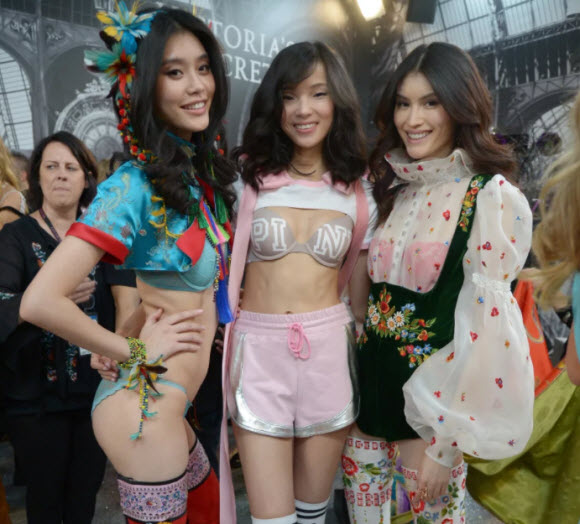
As for the potential for negative perception of Chinese models wearing revealing underwear during an internationally broadcast runway show? “People started to see [modeling lingerie] as fashion, not just trying to be sexy,” says Chen, shrugging off any implications of shock or scandal.
The casting for this year’s show marks another notable adjustment, with less emphasis on the so-called “Instagirls.” Victoria’s Secret is known for showcasing celebrity models with big social followings, including Kendall Jenner (who maybe isn’t walking because of a competing contract with La Perla, despite Liu Wen also being a brand ambassador). Former Angel Karlie Kloss and both Bella and Gigi Hadid were late announcements to the lineup, as well. Of course, the elder Hadid recently faced backlash of her own from the very vocal Chinese social media audience, thanks to a now-deleted video of Gigi squinting her eyes while holding up a buddha cookie, in what — based on elementary school recess taunts — I assume to be mocking of Asian eyes.
Hadid eventually apologized to her Chinese audience via Weibo, but commenters wanted official apologies from her via Twitter and Instagram (both of which are blocked in China) so that her 40-plus million combined international followers (compared to her 135K Chinese audience on Weibo) are aware of the situation. To date, she has not issued one on those channels. But for its efforts in China, VS’s main runway influencer has nothing to do with an “Instagirl” or five on the runway.
According to Bomoda’s Yang, Hadid’s mentions on micro-blogging platform WeChat amount to just half of Liu Wen’s, and the 22-year-old beauty’s engagements on Weibo amount to just one-fourteenth of the Chinese supermodel’s. With 19.5 million followers on Weibo, Wen is not only beloved and respected by the Chinese audience, but — more importantly — she legitimately moves product. In China, models don’t typically impact sales in comparison to actors, singers and general “KOLs” (or Key Opinion Leaders, which are essentially a mashup of celebrity and influencer). “But Liu Wen is an exception,” says Yang. She’s often referred to as what’s translated as “Queen of Driving Sales” and is the only model on the “Commercial Influence” category of Bomoda’s 2017 Key Opinion Leader Index, falling just outside of the top 10 at number 11.
Just because Instagram, Twitter and Facebook are technically blocked in China, that doesn’t mean that Victoria’s Secret’s social media strategy — including efforts from the models, like the Hadids and Wen with her 3.2 million Instagram followers — should ignore those channels. “The Chinese consumer has a way,” says Yang, about workarounds, like VPNs and the like. “Chinese consumers will see that content and they will talk about it on Chinese social platforms like Weibo and WeChat. It is still important for the brand to emphasize that content [on Instagram and Twitter, but still remain] specific to Chinese consumers.” Aside from the widespread runway images, videos, Boomerangs and Stories of the models’ antics backstage and appearances around the city to build buzz will impact their target Chinese audience.
Plus, social media may be especially crucial to the marketing and PR efforts for the show this year. Unlike years past, the brand will not fly international editors to the runway show on a VS-branded plane, a huge aspect of the London and Paris editions. On pure speculation — and partially based on my own personal experience of switching a short-lead People’s Republic of China vacation to a Hong Kong-Taipei-Singapore trip due to the slightly daunting tourist visa process — the J-2 visa application, screening and clearing process for a planeload of overseas journalists would probably be a costly and logistical headache of epic proportions, and was better left avoided.
Live streaming could also provide the brand with both a major branding opportunity and immediate, quantifiable sales. “It’s already a very mature business model in China,” Pan says. According to Mashable, 300 million people — a little less than the entire population of the United States — used live-streaming apps in China last year. Chinese viewers are accustomed to (and maybe even expect) watching a live stream with direct e-commerce links to buy. “Victoria’s Secret product is not expensive at all, so it’s easy to trigger any impulse purchase,” she adds, suggesting the brand beef up its regional e-comm offerings, which at the moment are focused on Tmall, as VS’s Chinese website is not currently e-commerce enabled. The Balmain x VS collaboration, which launches on November 29 — the day after the runway show is broadcast — offers even more opportunity of an impulse purchase because of the high-end brand name at a much more accessible price point. Chances are, VS is aiming for retail success at the level that H&M has with its designer collaborations, which have included Balmain, Versace, Isabel Marant, Alexander Wang and Kenzo in the past.
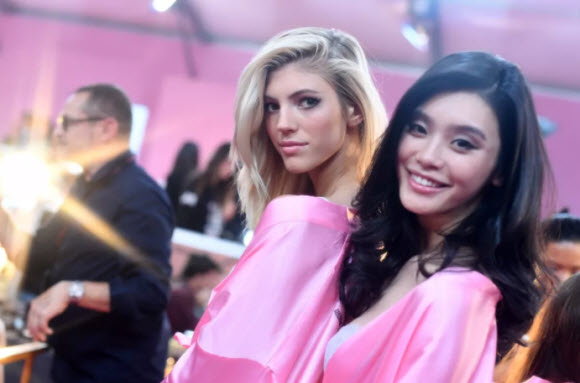
However, Victoria’s Secret’s traditional model of filming the live show first and broadcasting it at a later date could slow momentum for immediate sales opportunities with the Chinese audience. Yang suggests that the brand still use the live stream capabilities with behind-the-scenes, backstage video and interviews about the models’ time in China. “I notice that for every show, models like wearing Victoria’s Secret pajamas or they’re carrying some of the fragrance or other products behind the scenes,” Yang says. “So for those products, the brand can embed links into their social content.” Last year, the Victoria’s Secret live stream of the broadcast show counted 10.3 million views on video platform Tencent, which could amount to a lot of bras purchased.
Beyond anything we’ve discussed, we should revisit rule number one: Do not insult your host country, especially with tacky cultural appropriation. The most obvious way to avoid any awkward or offensive moments would be to work with and talk to local Chinese people involved in the show, including the native models. China is diverse country populated by 56 ethnic groups who speak a multitude of languages and dialects, and who celebrate their own customs and traditions — a fact that should be considered and well-respected.
“One thing that they definitely should do is have more experts from China — who grew up locally in China — weigh in [about] how to design the wings and the scenes for the show segments,” says Yang. “And maybe, through social media, they can explain their thought process or design inspiration behind the show theme. For last year’s show, a lot of Chinese consumers [offered criticism that] it wasn’t an authentic, [modern] way of showing Chinese culture.”
Chen also suggests hiring local production staff to weigh in and, of course, checking in with the models about what’s appropriate and what’s not, especially since they hail from different parts of the country. For instance, Liu Wen is from Hunan in the south, Ju Xiaowen from central Xi’an and Ming Xi is a Shanghai girl. Also, it should be noted that while Weibo commenters weren’t so happy about Hosk dressed in the dragon motif, some thought Wen (below) and Xi in Chinese-themed outfits were done the “right way.”
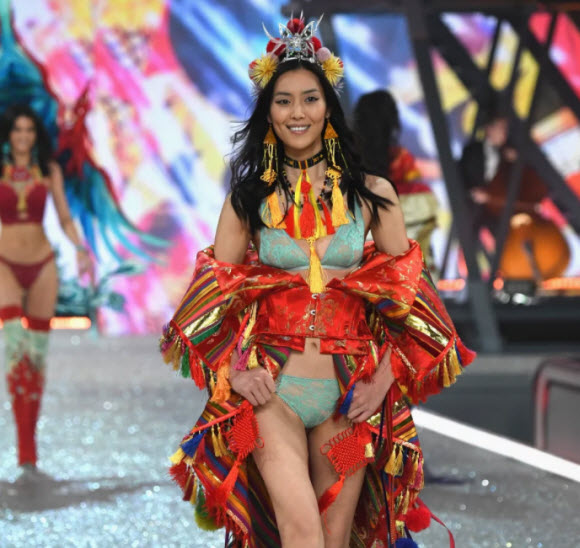
While global pop sensations (and alleged exes) Harry Styles and Taylor Swift are rumored to perform at the show this year, there’s plenty of China-based big-name talent available, too. “If they have one Chinese singer’s presence on the show, it would be really helpful for the brand,” adds Pan. Plus, inviting KOLs that affect sales like actor-singers Yang Mi and Lu Han (the top two in Bomoda’s luxury fashion influence ranking) to the show would generate even more social media goodwill and engagement. Although, interest leading up to the VSFS in November is already high; bootleg tickets to the invitation-only event are selling for upwards of US$14,000.
According to the experts we spoke to, above all, “Victoria’s Secret should make sure those [Chinese] models look beautiful,” Pan says. “They [should] put the best products on them so visually they look good. That’s what the Chinese consumer really cares about.” Here’s a free suggestion: This year, why not honor Liu Wen with the chance to wear the Fantasy Bra?
Source : Fashionista

